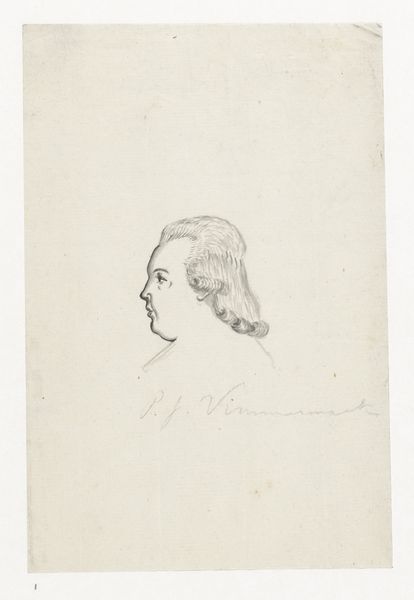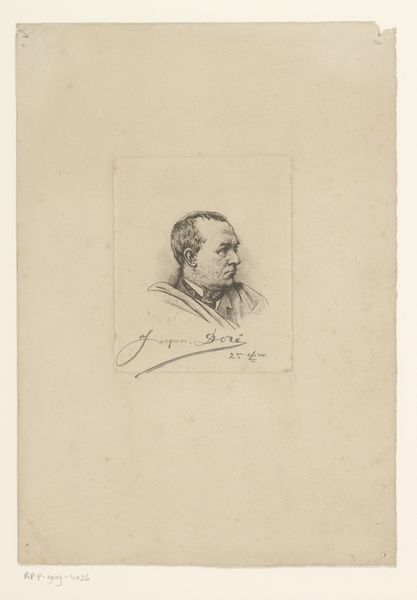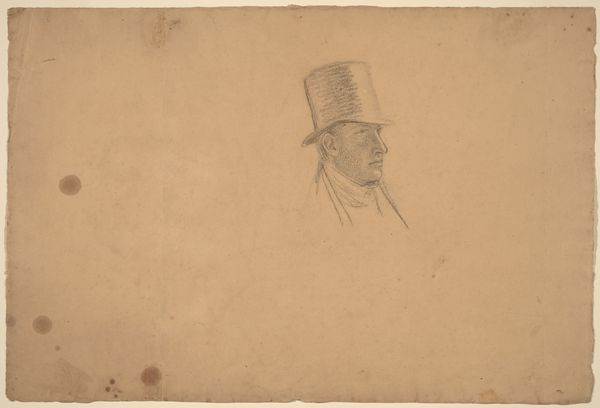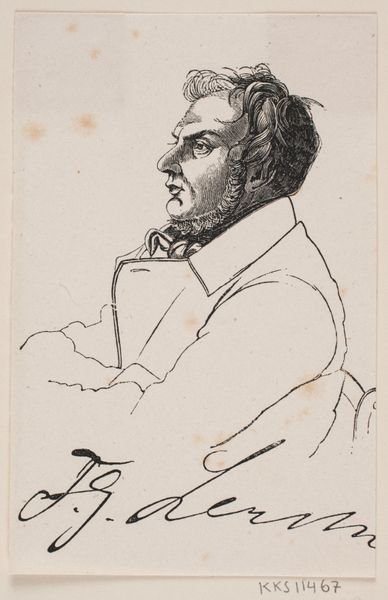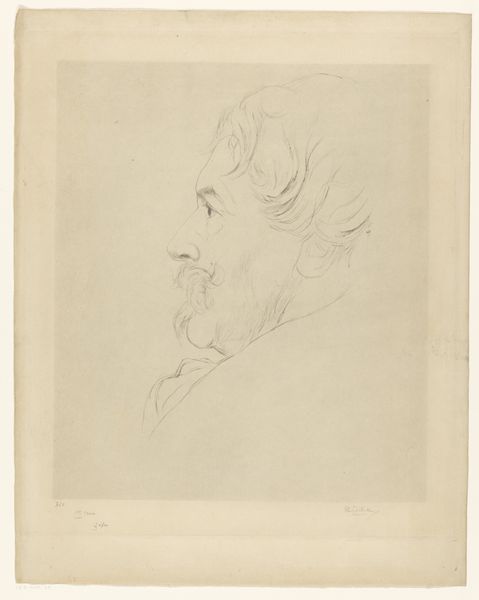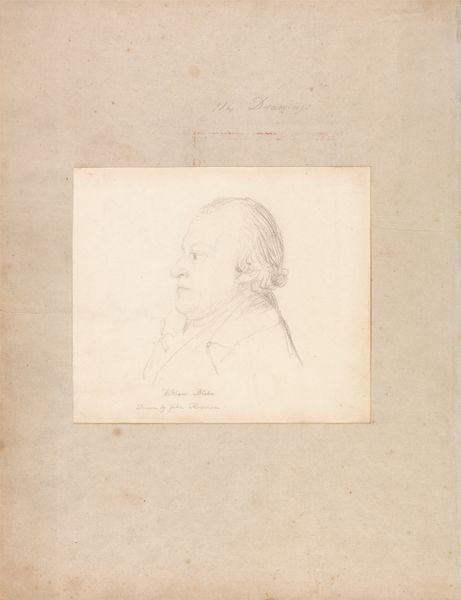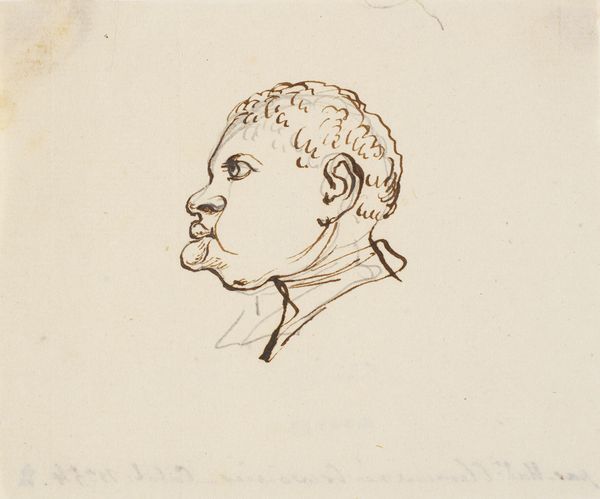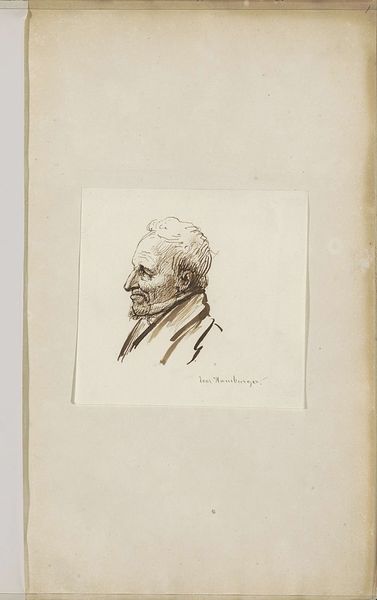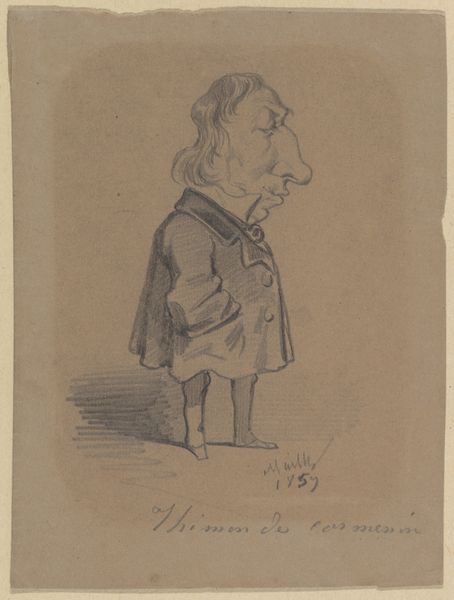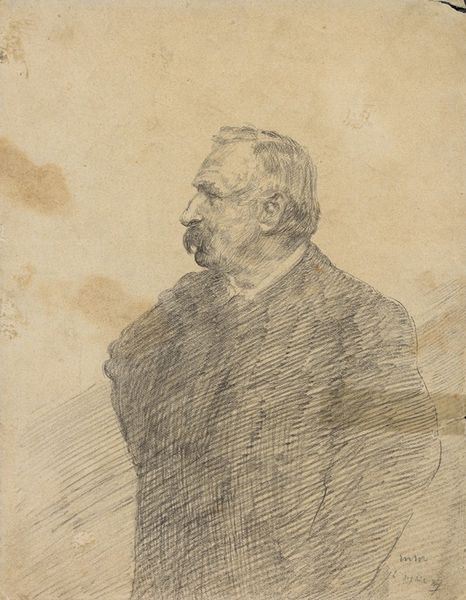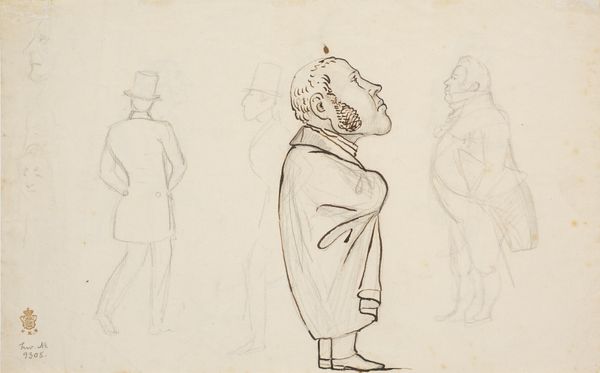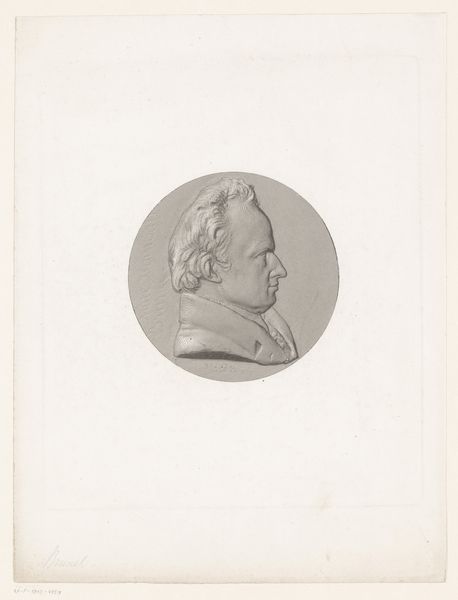
Portræt af "Strandingskommisæren" samt rids af et barn med bredskygget hat 1846 - 1847
0:00
0:00
drawing, pencil
#
portrait
#
drawing
#
landscape
#
romanticism
#
pencil
Dimensions: 125 mm (height) x 216 mm (width) x 11 mm (depth) (monteringsmaal), 125 mm (height) x 216 mm (width) (bladmaal)
Curator: This arresting pencil drawing, dating from 1846-1847, is by the Danish artist Martinus Rørbye. It’s called "Portræt af 'Strandingskommissæren' samt rids af et barn med bredskygget hat"—or, "Portrait of the 'Beaching Commissioner' and sketch of a child with a wide-brimmed hat." It’s currently held at the SMK, the National Gallery of Denmark. Editor: My first thought is one of wistful introspection. There's such gentle light rendered by the pencil, a soft vulnerability about the 'Beaching Commissioner' that draws me in, and then this ghost of a child faintly sketched to the left. It all evokes a sense of memories half-remembered. Curator: Rørbye, as a prominent figure in the Danish Golden Age, had a deep fascination with the natural world and humanity’s place within it. We often see his depictions of landscapes suffused with a strong Romantic sensibility. It's interesting that he’d capture this official—the “Strandingskommissæren”--likely tasked with overseeing the salvage of shipwrecks and ensuring fair distribution of recovered goods. Editor: It makes me consider notions of power, who it serves, and the lives touched by maritime tragedies. This commissioner, situated within that historical context, makes me think about contemporary border regimes, shipwrecks of refugees at sea, the bureaucratic apparatus behind them. Curator: Absolutely, and this delicate pencil work also acts like a revealing psychological study. There's an evident seriousness, an authority present in his bearing. And yet the almost unfinished nature of the drawing itself gives it this immediate intimacy, and what might we interpret from his solemn look toward an equally faded childlike figure? It suggests something deeply personal to me. Editor: Perhaps an assertion about masculinity itself, positioned so closely against a trace of childhood—it subtly hints at lost innocence or the weight of societal roles forced on men from an early age. I am now more curious about the person, rather than just the figurehead or the position he held. Curator: It's a lovely layering of context and introspection that Rørbye achieves with such subtle means. A study of not just a man, but also the artist, a lost era, and of the present, inviting us to contemplate so much. Editor: Yes, definitely! A stark, yet quietly lingering reminder of what once was and perhaps still persists.
Comments
No comments
Be the first to comment and join the conversation on the ultimate creative platform.
